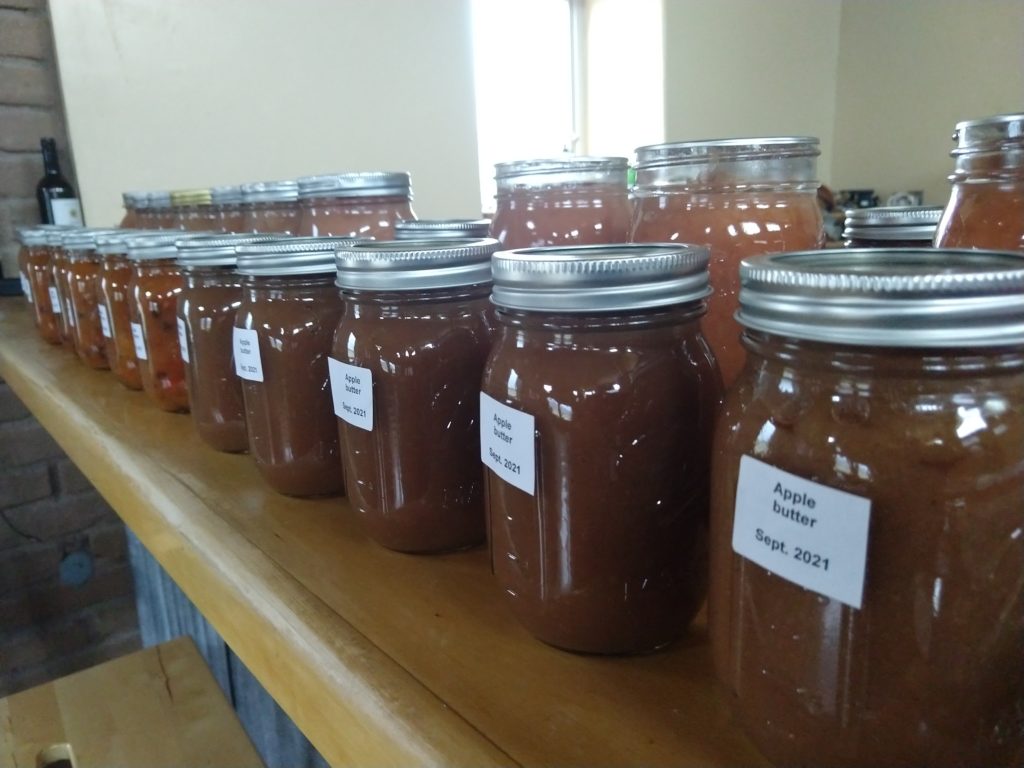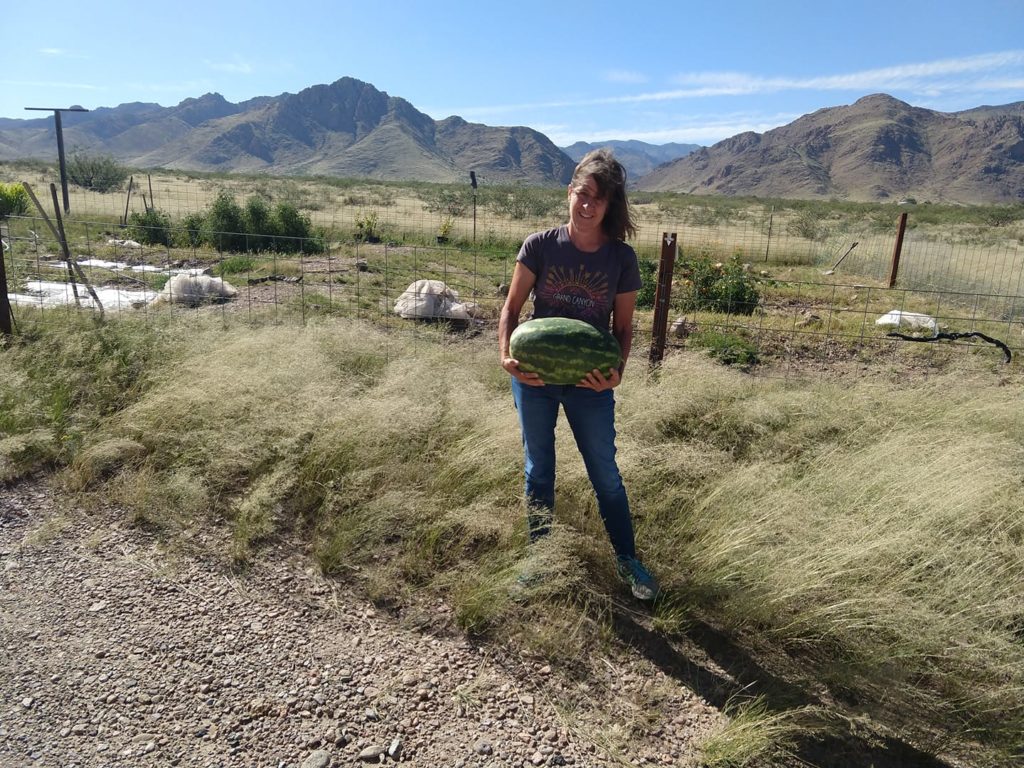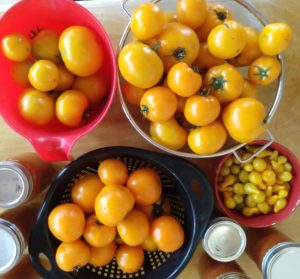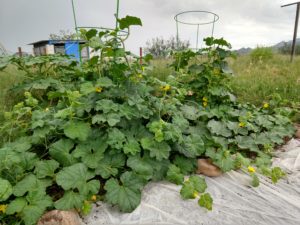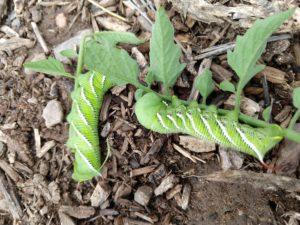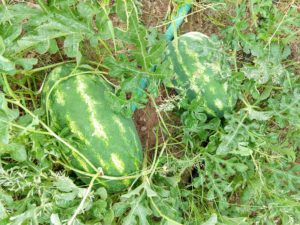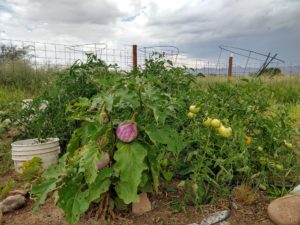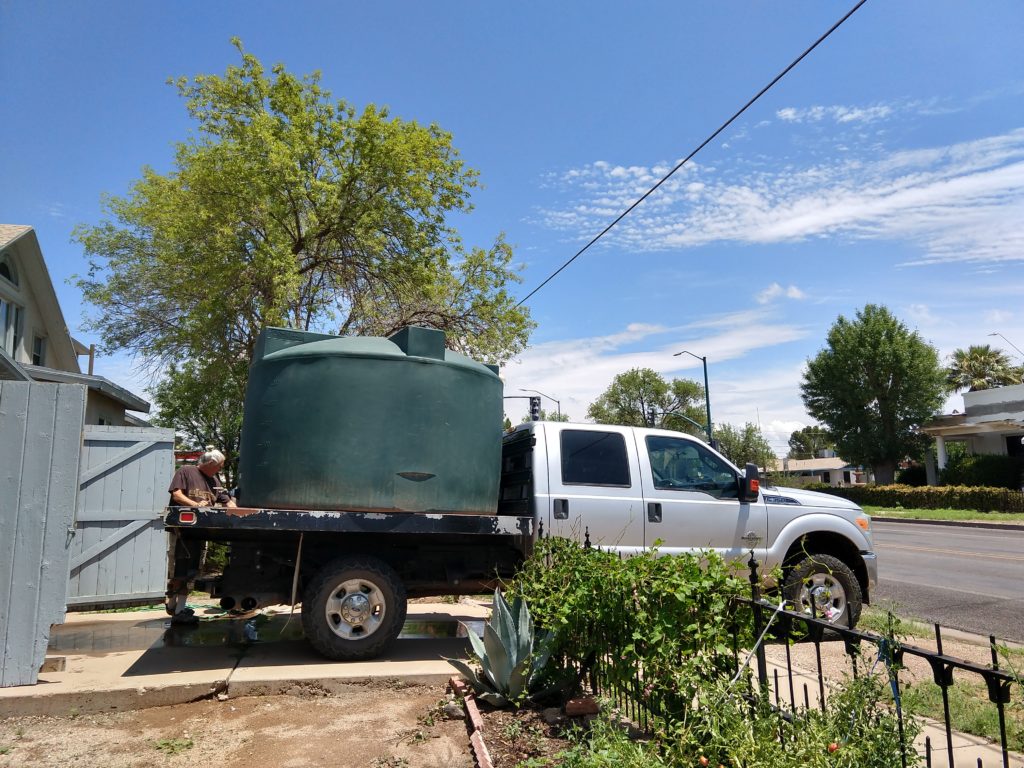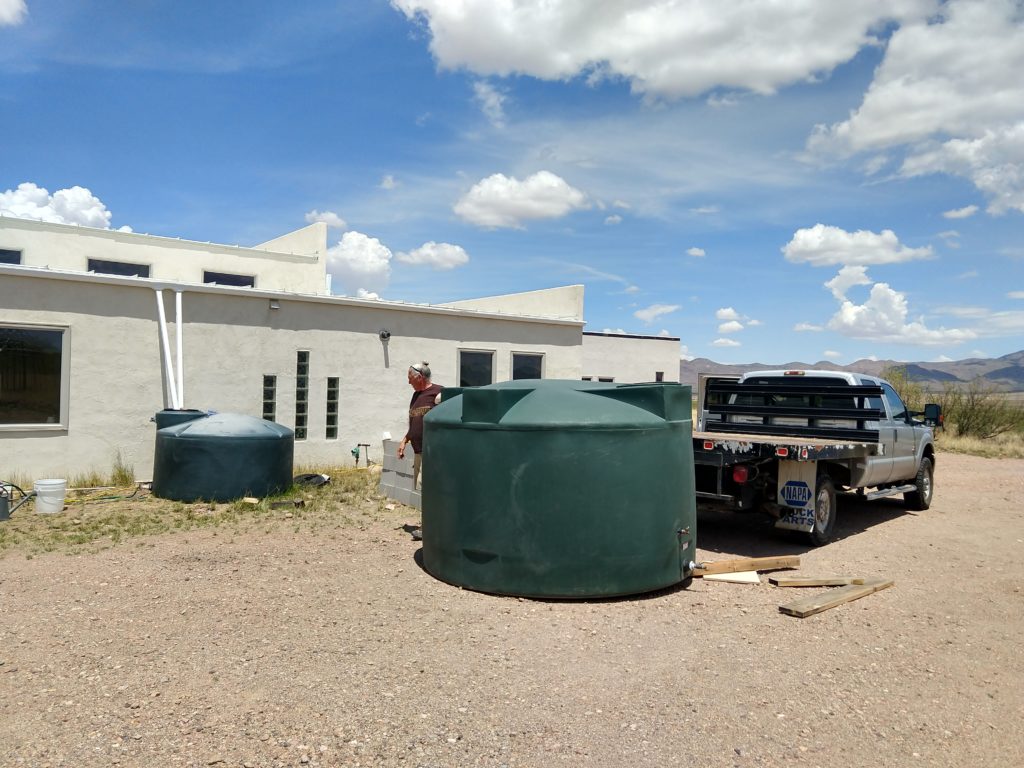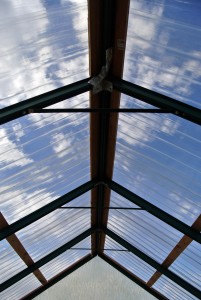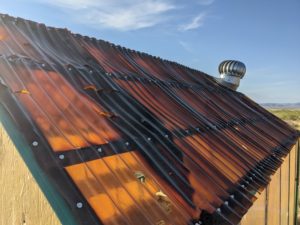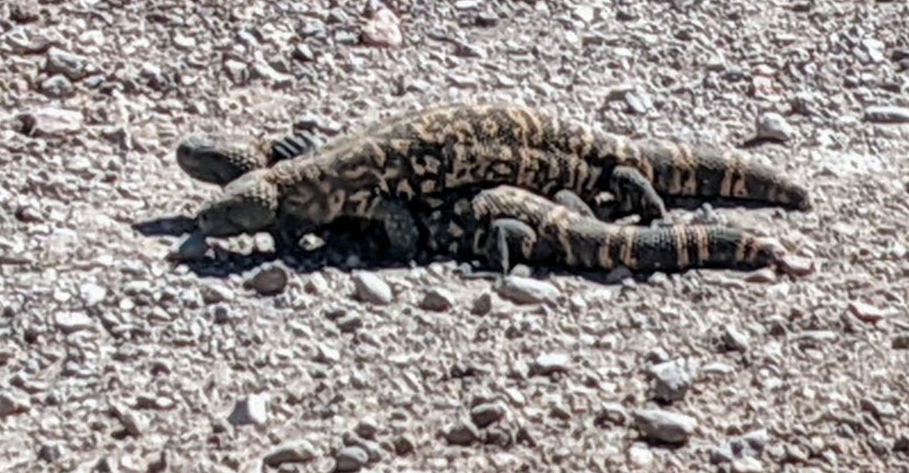There are many wonders to living close to the land (and far from other people) as we do. Among them our connections to the seasonality, awareness of the night time sky, and of course, sightings of wildlife.
For the 13 years that we have lived here, we have seen signs of what I was sure was a badger. Very sharp and long scratch marks in the dirt, occasionally clawing at a wooden door. But we never saw a badger.
Finally this morning, laying in bed, I heard something that sounded strange. I got out of bed, and right in front of the house, I saw it — the elusive badger. It was beautiful. Not too large and with a bold stripe running down its back all the way to the tip of its nose. It moved slowly and seemed uninterested in me as it looked right into the glass doors in our bedroom and then slunk over toward the other house and eventually out into the bush. Pretty great way to start the day.
Here’s a quick update on other things here: it is very hot and dry and windy as it often is in the spring. They are talking about a bigger than usual monsoon, which is rumored to start in mid June. We’ll see.
Being unsure what the future holds, we have cut back on the garden. Instead of our normal 10 or so beds, we are focusing on one bed and trying the intensive gardening idea that I have read much about. The idea is to plant a whole bunch of different things all densely in one bed. Since we usually have so many beds going, this hasn’t really made sense in the past, but this year I thought it might be a fun experiment. We’ll see how things go.
It’s so hot and dry, that the birds, especially the quail, are scratching up everything that’s watered. I know it doesn’t make much sense to plant things before monsoons, but it amuses me and keeps me busy so I do it anyway.
In the meantime, garlic is ready to harvest.

